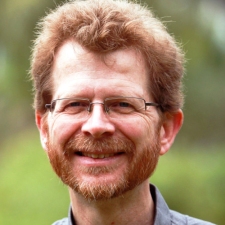CONSCIENCE SHOULD GUIDE DOCTORS AT
END OF LIFEaura Eggertson, Ottawa, Ont.
August 19, 2014
All doctors have the
right to follow their conscience when deciding whether to assist dying
patients physically or to provide
them with the means to end their lives
— within the bounds of legislation, delegates to the Canadian Medical
Association's
annual meeting have voted.
As Canada considers changingits laws concerning assisted death, Canada's doctors considered their stance on the second
day of the Canadian Medical Association's (CMA) 147th annual meeting in Ottawa. In the end, they voted 91% in favour of allowing individual physicians to follow their conscience
in deciding whether or not to provide assistance.
The association's
current 2007 policy states that physicians should not provide such
assistance, but as laws change, most
recently Bill 52 in Quebec, CMA decided
to revisit its policy. CMA President Dr. Louis Hugo Francescutti says
general council's
wishes will be discussed by the CMA Board
of Directors later this week or in October. "I can't predict what is
going to come
out of it, but I am hopeful."
CMA's French-language spokesperson
Dr. Pierre Harvey explained that it's not up to physicians to take a
stance for or against
the issue; that's the responsibility of
society. However, physicians can say what they want to do. "The motion
was inspired
by respect for our diversity," he said.
The motion represents
major progress over last year, when delegates at the annual meeting
couldn't even agree on terminology.
In the intervening months, CMA hosted a
series of town hall meetings across Canada on the topic. "The town
halls galvanized
our view around this," said Francescutti.
The terminology was
changed to physician-assisted death at this year's meeting and doctors
were encouraged to voice their
views during a nearly three-hour session.
The complex ethical issue involves the physician's ability to meet
terminal patients'
requests to end their suffering or
expected loss of control; the effectiveness of and access to palliative
care; and their
own legal liabilities and
responsibilities.
Canadians need better, more equitable access to palliative care, doctors agreed. But even a national strategy and better
access to pain relief will not negate the need for medical aid in dying, many doctors concluded.
For some patients, doctors who provide morphine and sedatives are not only giving pain relief, "we are actively facilitating
their death," said Dr. Paul Parks, an emergency physician from Medicine Hat, Alberta.
The stories doctors related on August 19 were as personal as they were professional. They acknowledged the often agonizing
dilemmas patients, their families and their doctors face.
Dr. Sarah Bates, a
Calgary family doctor, addressed delegates as a caregiver and potential
future patient, she said. "My
Mom developed familial Alzheimer's in her
early 50s. My sister has just been diagnosed — she is 43. So these
issues weigh
very heavily on my mind," Bates told about
250 delegates and close to 400 observers.
"There are conditions,
we all know, where no level of oxygen, morphine or supportive
counseling is going to provide relief
of suffering. Just because we have a
respiratory drive, a swallowing reflex and a beating heart doesn't mean
we have a life.
''
The CMA is discussing
the issue of end-of-life care in the context of an upcoming Supreme
Court of Canada decision that
is expected to rule in October on the
legality of physician-assisted death. The CMA has been granted status to
intervene
as a "friend of the court" in the case,
and will be presenting the complexities of these issues from doctors'
perspectives,
Dr. Jeff Blackmer, the association's
executive director of ethics, professionalism and international affairs
told delegates.
Quebec has passed
legislation permitting medical aid in dying, under particular
circumstances and after consultation with
more than one doctor. That law is
expected to take effect in late 2015 unless it is the subject of a
federal constitutional
challenge.
The bill may well make
Dr. Angela Genge, who heads the Montreal Neurological Institute's
amyotrophic lateral sclerosis
(ALS) clinic, the first doctor in Quebec
asked to comply with the law. That's because her patients with ALS and
other terminal
neurodegenerative diseases regularly ask
her to help them end their lives.
"My ALS patients are
very bright," Genge told delegates. "They can be any one of you in the
room." Her patients fear loss
of control, suffering, and being a burden
on their families. Most of all, they want permission to discuss how and
when they
want to die.
Every patient has the right to have that discussion, Genge said, and Quebec's law provides clarity around that right and
ensures it can take place, even if it doesn't alter how a doctor responds to these requests.
"The minute I do not
allow my patient to discuss their desire to be in control of their
death, I actually break the patient-physician
relationship," she added. "My patients
are as intelligent as you and I are and they have the right to have
that discussion."
All of her patients have, however,
ultimately "changed the goalposts" they initially set for themselves
about what point
in their illness they would choose to end
their life. That's the reason Genge hopes the regulations that
accompany the Quebec
legislation will not fix a time period in
which physicians have to respond to a patient's request for help ending
their life.
In addition to passing a
motion supporting physicians' right to act according to their
conscience, the delegates also instructed
the CMA to investigate and communicate
Inuit, Metis and First Nations' perspectives on euthanasia,
physician-assisted death
and end-of-life care. Physicians must be
sensitive to the experience of many Aboriginal communities already
coping with high
levels of suicide, and in particular teen
suicide, Dr. David Pontin, the president of the Northwest Territories
Medical
Association, pointed out.
It is also critical
that the CMA develop a strategy to make sure there are enough doctors
trained to deliver palliative
care across Canada. Currently, Canada
needs at least another 300 palliative care specialists, Dr. Doris
Barwich of the Canadian
Society of Palliative Care Physicians told
delegates. In addition, 75% of doctors have identified their need for
further
palliative care help and education, she
added.
Other family
physicians, however, described their current cradle-to-grave practices
involving palliative care and suggested
that with greater education and support,
more doctors could provide these services that Canadians have repeated
stated they
want and need.
"All doctors want is a
little bit of help, mostly around prescribing narcotics," said
Dr. Suzanne Strasberg, a family physician
in Toronto. "What we need is: we need
education. I think we should be ready to do this work."
The CMA will support
the development of an advanced care planning, palliative and
end-of-life care strategy in all provinces
and territories, delegates agreed, while
leaving it to the broader Canadian public and legislators to change the
laws around
medical aid in dying.
DOI:10.1503/cmaj.109-4880















